 This article will assist in demystifying the types of architectural glass used in buildings. The names we use for the different glass types are generally attributed to some part of the manufacturing process. In part one of this two part series, we look at basic glass products to highly processed glazing options.
This article will assist in demystifying the types of architectural glass used in buildings. The names we use for the different glass types are generally attributed to some part of the manufacturing process. In part one of this two part series, we look at basic glass products to highly processed glazing options.
Some History on Architectural Glass
Since clear glass was being first made in about 100 CE, in Alexandria, the Romans began using it architecturally. This began the long list of manufacturing methods and specialised names attributed to the different types of processes – Broad sheet, Crown, Polished Plate, the list goes on. In 1848, a crude form of float glass was patented by inventor Henry Bessemer by pouring glass onto liquid tin, but it was very expensive. It wasn’t until 1959 that this idea for float glass was made in a practical method – a discovery by Sir Alistair Pilkington that now dominates the worldwide commercial production of architectural glass products.
Basic Float Glass Products
The differences between the basic glass types are formed in the glass making “float process”. Soda, lime and silica as well as broken glass called cullet are the major components used in the manufacture of glass. These components are mixed into a batch before being heated to approx. 1500°C in a furnace. The molten glass is then floated on a “tin bath” – a layer of molten tin. As the glass begins to cool it solidifies and is drawn out of the float tank in one continuous ribbon. The glass enters the annealing or cooling lehr – it is the controlled cooling (annealing) of the glass that allows it to be cut and further processed.
Float Glass or Annealed Glass
These terms are interchangeable and refer to the respective glass manufacturing processes. They describe glass in its basic form, before secondary manufacture. In a general sense, Annealed Glass is used when comparing heat treated glass to non heat treated glass.
Clear Glass
Clear Glass is a piece of transparent float glass, typically uncoloured.
Tinted Glass
Tints are glass with metal oxides added to give it a specific hue. The tint or colouration is through the body of the glass and therefore darkens with an increase in thickness. Apart from aesthetics, tinted glass is used for reducing heat gain through the glazing system. Common tints include green, blue, grey and bronze.
Super Tints
Super Tints are designed to reduce heat gain while allowing the maximum amount of light through making it a performance product. The heat absorbing qualities also make them prone to thermal stress (caused by temperature difference), and a thermal safety assessment is recommended to determine if heat treating is required (see Secondary Manufacture below). Colours include Azuria, Super Green and Super Blue.
On Line Coated Glass
Sometimes referred to as pyrolytic glass, metallic oxides are deposited onto the glass surface in the float glass tank during manufacture. These coatings can increase the performance of the glass with a range of reflective and low E products available. They are extremely hard and durable, and can be used on their own or heat treated without affecting the coating.
Low Iron Glass
The green colouration in glass is due to the iron content found in silica or sand. Low Iron Glass has less than 1/10th of the iron content of standard glass and are considered ultra clear. Low Iron Glass is ideal for use in display cases, painted glass applications like splash backs or in areas where high clarity is required.
Deli Bend or Curved Glass (Annealed)
Glass can be curved as float, by laying the glass over a mould before annealing begins. It is commonly used to make butcher or delicatessen benches (hence the name), furniture and curved architectural glass that is to be laminated.
Processed Glass
Glass requires finishing before it can be used in location, or sent for secondary manufacture. Commonly, this includes cutting to size, and edging, but there are many alternatives in both these fields.
Cutting
Almost all glass will require cutting to the job size requirements, but this process also includes cuts to produce as irregular shapes, such as raked windows, shower screens with cut outs for fittings, glass walls needing spider fittings and custom profiling.
- Various regular and irregular shapes required are cut with a CNC machine.
- V Grooved cuts in the face of glass, or brilliant cut, provides an alternate decorative finish.
- Drilling – Holes from 5mm to 100mm can be drilled into the glass, but the hole diameter must be equal to or greater than the glass thickness. Holes can include a countersunk rim. The hole edging has a ground finish.
- Shaping – glass can be cut at special shapes or profiles to custom requirements.
There are edge clearances that are relative to the glass thickness for the size and location of cut outs and holes drilled into a sheet of glass. Please contact your manufacturer for exact positioning limitations.
Edging
Edging provides a range of options for the perimeter of the glass to suit its application. Different edges are applied for ease of installation, to assist with further processing or to achieve a look. One common process is arrissing – a term used to describe the method used to grind the sharp edges of glass to make them safer to handle.
- Plain cut glass, is called Clean Cut
- Glass to be toughened requires Rough Arris edge work – arrissed edges with a rough ground finish.
- Smooth Arris is similar to the rough arris, but with a smoother finish to the edge.
- Flat Grind or Flat Smooth edges are machined smooth edges suitable for silicone butt jointed applications.
- Flat Polished is the neatest finish used for exposed edges of glass.
- Mitred Glass has a 45 degree bevel on one side with an edge finish suitable for mitred silicone butt joints.
- Round and Polished edge work gives the glass a curved edge for exposed perimeters.
Secondary Manufacture
Secondary Manufacture takes the various types of float glass and changes the properties in a range of production processes.
Heat Treated Glass
A general term used to describe the process of further strengthening or testing glass in a second heating and cooling process. Its is the way or speed in which the glass is cooled gives the glass stronger properties, and length of heating to test the glass.
Heat Strengthened Glass
Heat strengthening is a treatment of glass that induces a high compression layer on the surface. This is done by cooling the reheated glass at a specific rate. This process makes glass twice as strong as annealed glass, although it is not considered safety glass.
Toughened or Tempered Glass
Toughening glass also induces a high compression layer in a similar process to heat strengthened glass. To toughen the glass, the heated glass is cooled very quickly. This makes it 4 to 5 times stronger than annealed glass of the same thickness. Certain thicknesses are considered A grade safety glass – refer to standard AS 1288.
Heat Soaked Glass
Toughened glass can spontaneously shatter due to small imperfections in glass called Nickel Sulphide inclusions. They are rare, but undetectable, and so, to ensure the glass will retain its form, heat soak testing is done. The glass is heated for a period of time which induces the Nickel Sulphide inclusions to rupture if they are present. Glass that passes the test, has a markedly reduced possibility of failure once in location.
Curved Glass (toughened)
Curved Glass that requires toughening is bent in the toughening process. A series of rams fold the glass to the desired shape. Tighter corners and soft curves are achievable.
Off Line Coating
High performance glass has a coating applied to its surface. Different looks can also be achieved with colour and reflectivity. Although large steps in technology over the last couple of years have increased the durability of off line coatings, some are quite delicate, and cannot be heat treated. Others need to be used in an IGU, so the coated side of the glass is sealed from the elements and physical damage.
Laminated Glass
Laminates are made of two or more pieces of glass permanently bonded together with interlayers. Interlayers are made up of various materials to give the completed glass additional properties, for example, acoustic, colour and UV eliminating. Laminated glass is considered A grade safety glass.
IGUs
IGUs consist of two panels of glass fitted together with a hermetically sealed air space in between to provide an insulative layer protecting against thermal and acoustic issues. The air in the gap is dried to prevent condensation issues.
Other common glass terms
The following terms are not processes done to manufacture glass, but are descriptions of how they are classed, rated and used.
Double Glazing
Double glazing is when two pieces of glass are used with an air gap in between. Special framing suites with glazing pockets front and back are considered double glazed, as are jockey sashes and IGUs.
Monolithic Glass
Monolithic glass is a single pane of glass as opposed to laminated, double glazed or insulated glass units.
Safety Glass
Safety glass is processed glass that is manufactured to satisfy the requirements of AS/NZS 2208 for safety glazing. Laminated and toughened glass are rated Grade A. Wired glass is rated Grade B.
Security Glass
Security Glass is designed to repel violent attack. They are usually combinations of laminated glass that incorporate toughened or polycarbonate combinations. They are not necessarily considered Safety Glass.
Part two to be released in November –
I hope you found these descriptions useful. In part two of this article, thermal glazing terms and properties will be discussed. It will include the terms used to measure and describe performance, what basis the measurements are made from and a comparison of data commonly used – glass only vs whole of window data.
















 Stage 2 of the Australian Defence Force’s accommodation upgrade to their
Stage 2 of the Australian Defence Force’s accommodation upgrade to their 



























 A project showcasing the many products G.James Glass & Aluminium and affiliates produce, is due to open next week. Facets of the G.James organisation, including metal fabrication,
A project showcasing the many products G.James Glass & Aluminium and affiliates produce, is due to open next week. Facets of the G.James organisation, including metal fabrication, 




















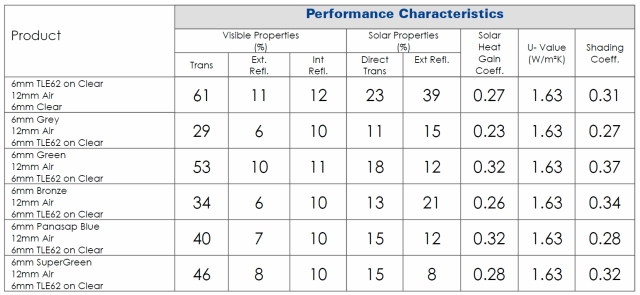



 Ongoing development of a historical site located at Newstead (Brisbane), sees it transforming in stages to a new mixed use precinct. The name derives from the sites original use – the gasworks, and part of the project is to protect the heritage listed gasometer located prominently amid the gasworks buildings.
Ongoing development of a historical site located at Newstead (Brisbane), sees it transforming in stages to a new mixed use precinct. The name derives from the sites original use – the gasworks, and part of the project is to protect the heritage listed gasometer located prominently amid the gasworks buildings.












 Insulating Glass Units (IGUs) or double glazing, have been a popular solution to control noise, but they aren’t the only, or even the best solution in many cases. The aim of this article is to explain how acoustic problems are identified, assessed and provide solutions to properly address them.
Insulating Glass Units (IGUs) or double glazing, have been a popular solution to control noise, but they aren’t the only, or even the best solution in many cases. The aim of this article is to explain how acoustic problems are identified, assessed and provide solutions to properly address them.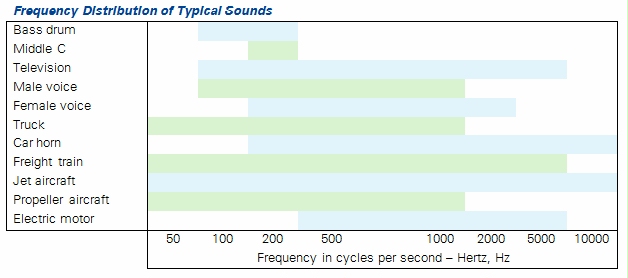

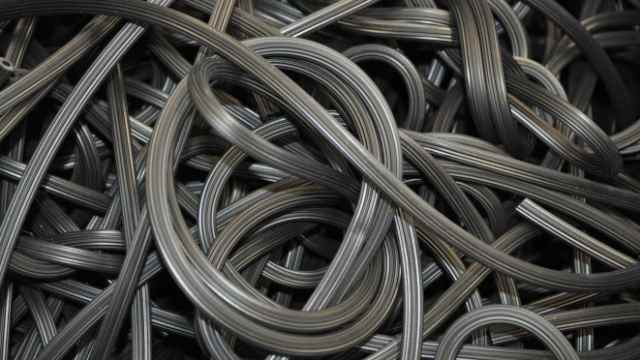 The G.James Glass and Aluminium Plastics department has been operating since 1995, and started out manufacturing just 2 products for in house use. Type and quantity of manufacturing has been growing steadily ever since. Commercial sale of products initiated 5 years ago, and now supports several industries.
The G.James Glass and Aluminium Plastics department has been operating since 1995, and started out manufacturing just 2 products for in house use. Type and quantity of manufacturing has been growing steadily ever since. Commercial sale of products initiated 5 years ago, and now supports several industries.













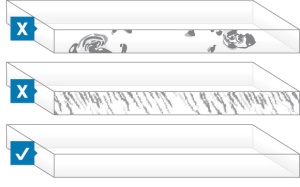




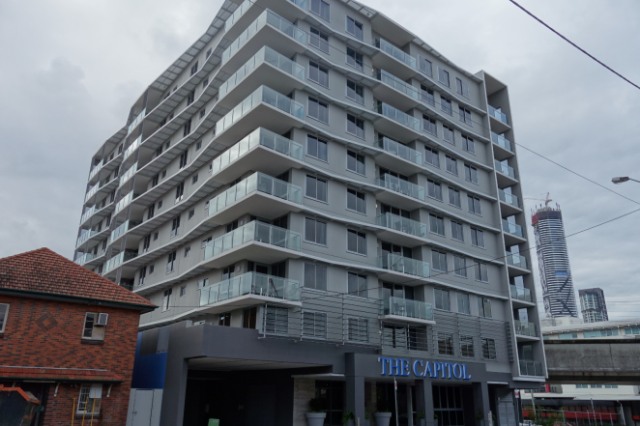 Capitol Apartments has been recently constructed at 35 Peel St, South Bank, Brisbane, QLD. It is a 10 storey building designed by
Capitol Apartments has been recently constructed at 35 Peel St, South Bank, Brisbane, QLD. It is a 10 storey building designed by 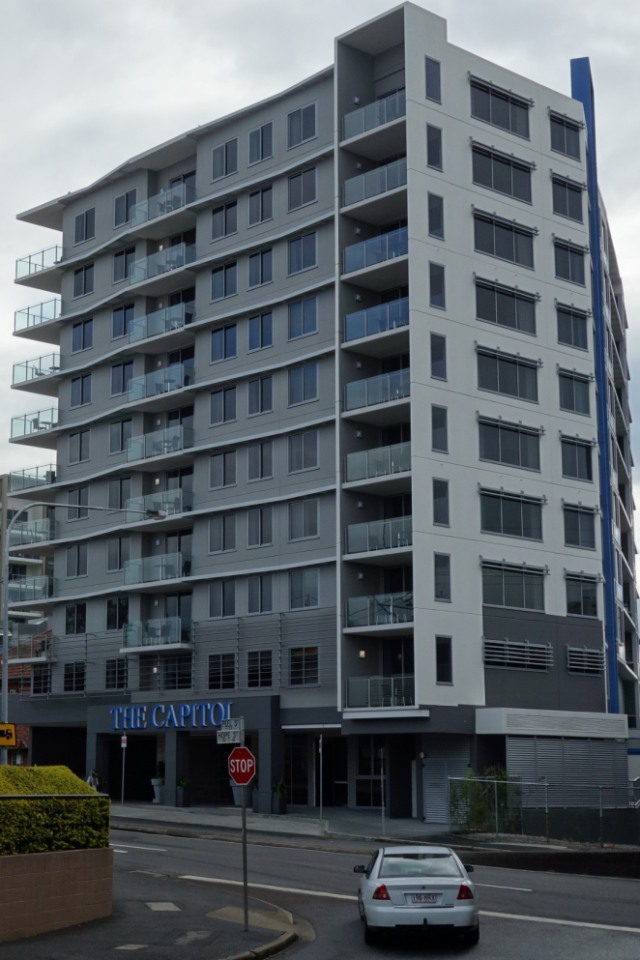 The initial design phase required the windows to comply with acoustic standards, or the apartment would not get approval to be built. G.James were the only glaziers that could beat all the ratings required, and provide evidence via testing that these results were guaranteed. The design initially specified opening sizes to be built to, but to ensure quality, it was actually done as a measure and fit job. As such, the lead times were brought down dramatically in the manufacture and installation scheduling required to meet the builders time line, which G.James achieved.
The initial design phase required the windows to comply with acoustic standards, or the apartment would not get approval to be built. G.James were the only glaziers that could beat all the ratings required, and provide evidence via testing that these results were guaranteed. The design initially specified opening sizes to be built to, but to ensure quality, it was actually done as a measure and fit job. As such, the lead times were brought down dramatically in the manufacture and installation scheduling required to meet the builders time line, which G.James achieved.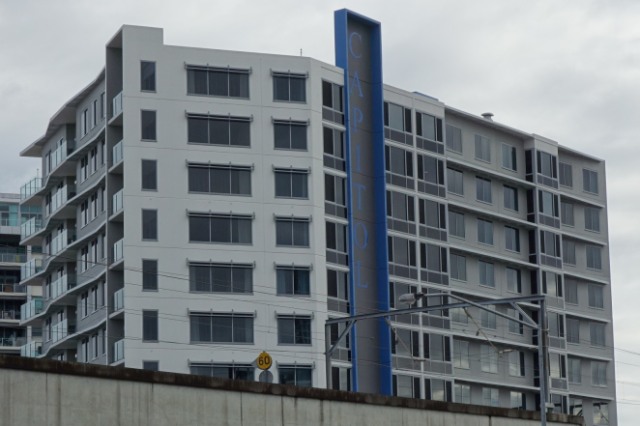 Bedrooms were fitted with jockey sashes to provide an adequate acoustic barrier, and living spaces had IGUs (as well as the alfresco area) to protect it from railway traffic noise. Both use the 451 system. Some balconies also have 136 Double Hung IGUs incorporated into their design. Other areas use differing glazing suites including the 165 slider vents to wet areas, 265 awning windows, 651 shop front with IGUs in the gym on level 1 with a 476 hinged door. The main entry was a 475 auto sliding door, and the 477-300 bi-fold system with a lowlight under in 650 framing are a suitable finish in the restaurant. All framing not done on the railway elevation used various types of SGUs to suit the look required.
Bedrooms were fitted with jockey sashes to provide an adequate acoustic barrier, and living spaces had IGUs (as well as the alfresco area) to protect it from railway traffic noise. Both use the 451 system. Some balconies also have 136 Double Hung IGUs incorporated into their design. Other areas use differing glazing suites including the 165 slider vents to wet areas, 265 awning windows, 651 shop front with IGUs in the gym on level 1 with a 476 hinged door. The main entry was a 475 auto sliding door, and the 477-300 bi-fold system with a lowlight under in 650 framing are a suitable finish in the restaurant. All framing not done on the railway elevation used various types of SGUs to suit the look required. 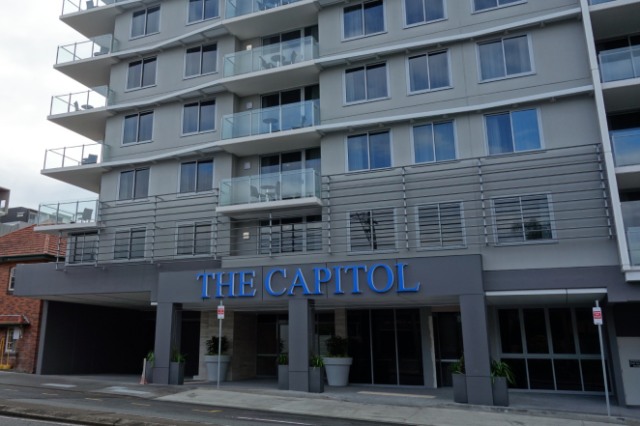 We have released
We have released 